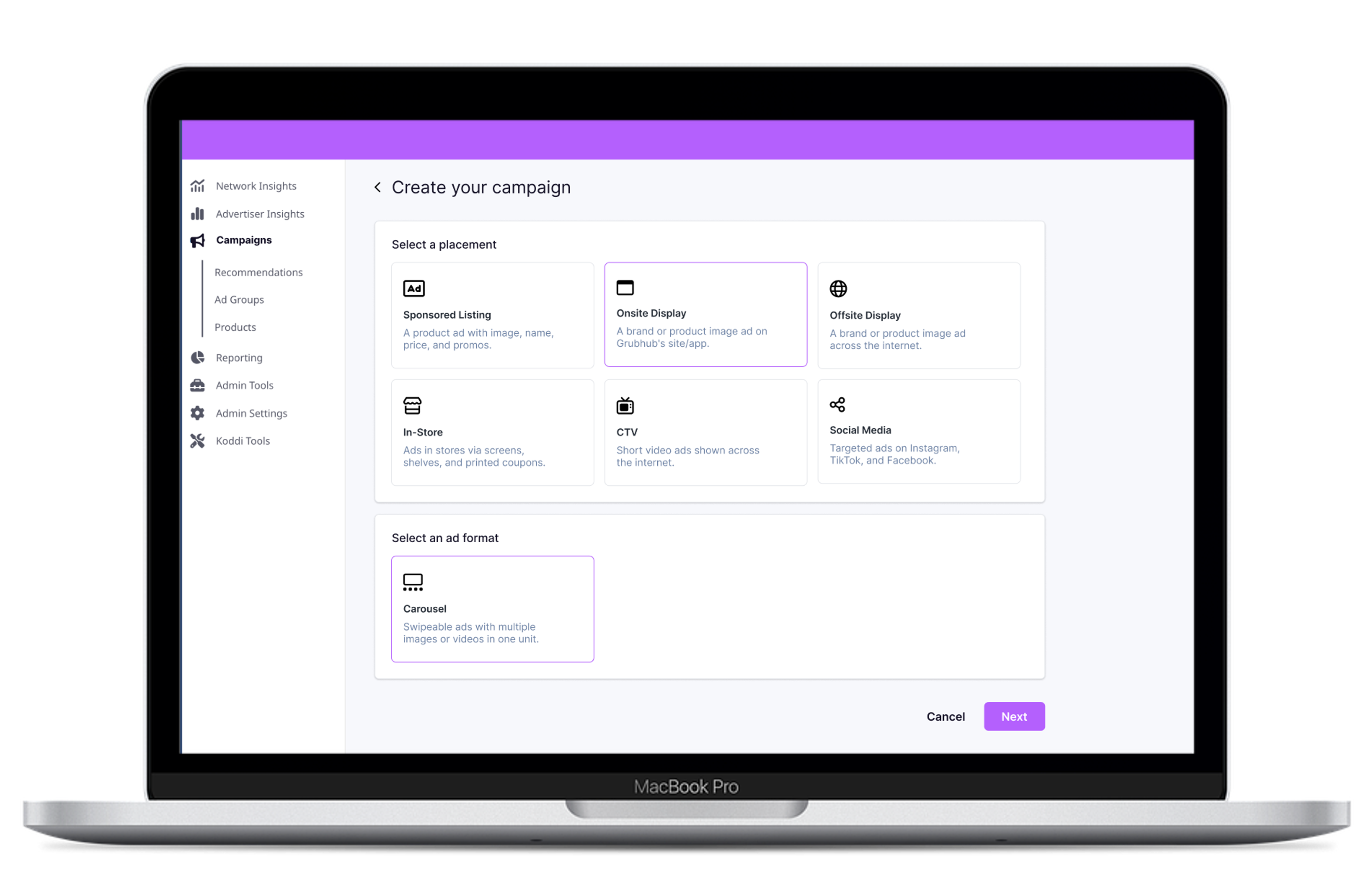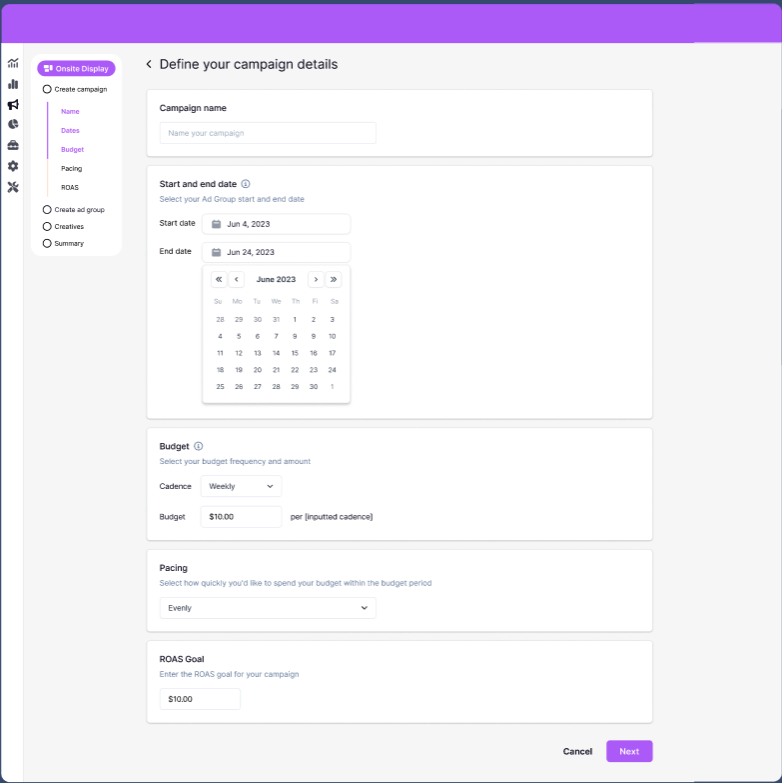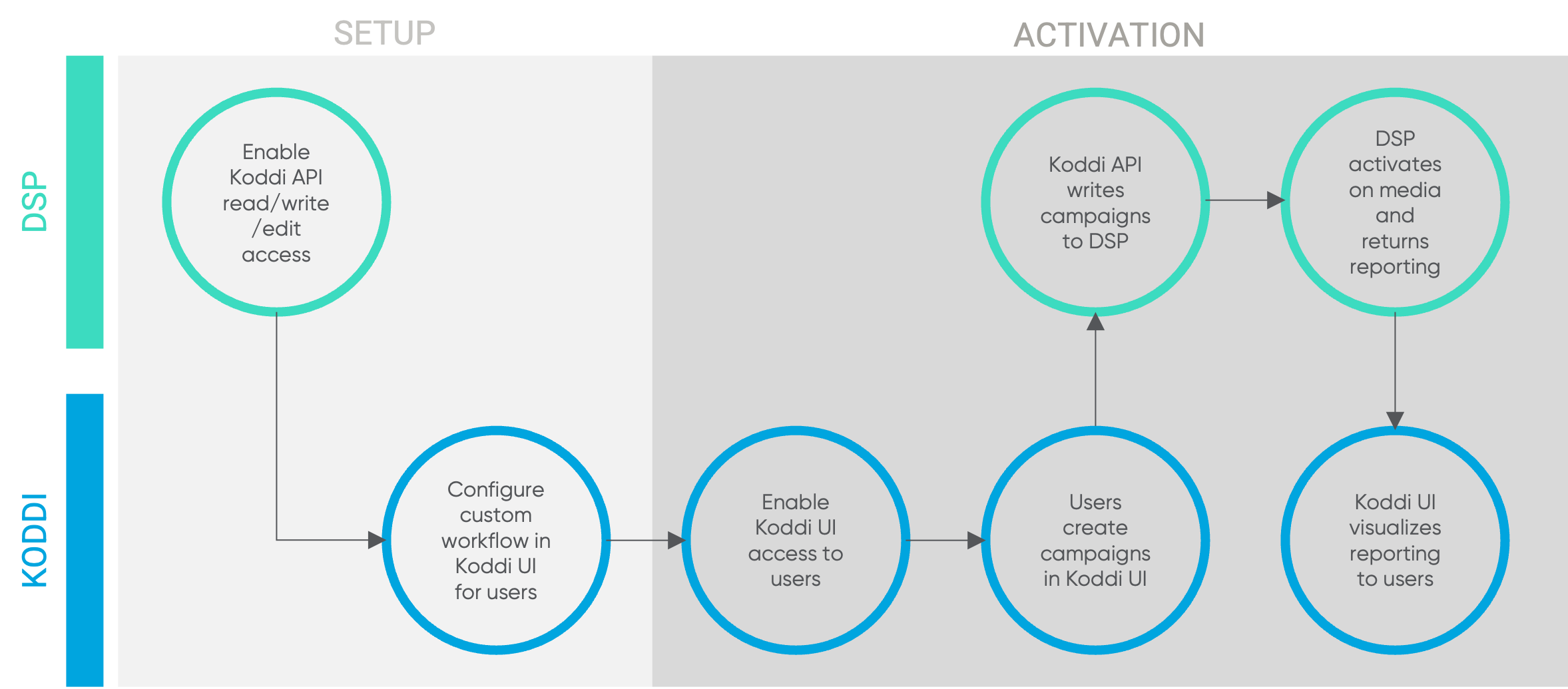Offsite DSP Integrations
This page provides guidance on Koddi-DSP integrations for publishers.
Koddi Offsite Advertising Overview
Koddi enables publishers to seamlessly manage their offsite advertising business across major demand-side platforms (DSPs) and walled gardens, including but not limited to DV360, The Trade Desk, Facebook/Instagram, Pinterest, and Snapchat. Our platform integrates offsite campaign management directly within the white-label self-serve Koddi Ads UI.

Publishers have the flexibility to customize the campaign creation flow for advertisers by enabling or disabling specific settings and tools. Koddi recommends that publishers include essential baseline parameters such as:
- Flight dates
- Pacing types
- Bid strategies
- Audience targeting
- Creative uploads
Additional settings such as frequency capping, geotargeting, device targeting, and more may be enabled, disabled, or pre-set with defaults for advertisers based on the publisher's preference.

Koddi's platform streamlines ad trafficking and automates the retrieval of reporting data on an hourly or daily basis. This helps publishers expand their offsite operations through automated, self-serve solutions, while minimizing the need for managed services and reducing the publisher’s workload.
Managing Offsite Campaigns: Seat Ownership Models
A key component of running an offsite advertising business is determining whose DSP seat will be used to execute campaigns. Koddi supports multiple approaches, each with its own trade-offs:
- Publisher-Controlled Seat (most common)
- All offsite campaigns run under the publisher’s DSP account/seat.
- The publisher's data is preloaded into the DSP for audience targeting and conversion tracking.
- The publisher retains full control over targeting, optimizations, and data.
- Billing and budget tracking are simplified and unified.
- Publisher may continue to provide optimization expertise as needed.
- Koddi-Controlled Seat
- Koddi operates the campaigns on behalf of the publisher.
- Requires additional coordination for audience activation and attribution.
- Reduces operational overhead for publishers.
- Koddi manages optimizations, reporting, and campaign execution.
- Less flexibility for publishers to make direct campaign adjustments.
- Hybrid Model (least common - not recommended)
- A mix of publisher- and Koddi-controlled seats.
- Provides ultimate flexibility but introduces complexity in audience sharing, streamlined reporting, and optimization strategies.
Seat Linking Process
To activate offsite campaigns, the DSP seat needs to be properly linked to Koddi. This process varies by platform but typically involves credential exchange, authorization of Koddi as a campaign manager, API read/write/edit access, and setting up appropriate billing and permissions.

Audience Synchronization
Audience management and synchronization occur outside of Koddi’s control. Publishers typically work with their Customer Data Platform (CDP) or Data Management Platform (DMP) to identify relevant audiences that can be monetized across offsite channels. These audiences are then pushed to the appropriate DSP seat based on the seat ownership model.
- Standard Audience Activation: The publisher’s CDP/DMP pushes predefined, high-value audiences directly to the DSP. These are typically built as category-level audiences available to any and all advertisers.
- Custom/Bespoke Audiences: On occasion, advertisers may request a unique audience segment. The publisher coordinates with their CDP to define and push that audience on a case-by-case basis. If data is stored in the DSP itself, publisher or Koddi can build custom audiences directly in the DSP.
Custom audiences are typically sold as the exception rather than the rule, as manual audience creation can introduce inefficiencies around scale.
By leveraging Koddi’s offsite advertising solutions, publishers can efficiently scale their offsite business while maintaining control over campaign management, audience strategies, and ad execution. For additional technical details on integration and setup, refer to our developer documentation.
Updated 9 months ago
